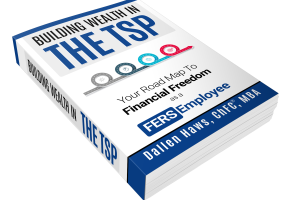Retirement is one of the most significant transitions in life, especially for federal employees who have dedicated decades to public service. Yet, despite the many resources available, myths and misconceptions about retirement planning are still surprisingly common. If you’re a federal employee looking to retire comfortably, it’s critical to separate fact from fiction. Let’s break down some of the most pervasive retirement myths so you can retire with confidence.
Myth #1: My Expenses Will Magically Decrease in Retirement
Many federal employees assume that their expenses will naturally drop once they leave the workforce. This is a tempting belief, but it’s rarely the case. While some costs, like commuting or work attire, may decrease, other expenses often increase. Retirees often have more free time for travel, hobbies, and family gatherings, all of which can add to their spending. Health care costs also tend to rise with age, even if you have good insurance. While you may no longer need to pack a lunch or fuel up for the daily commute, the costs of living – including healthcare, home maintenance, and travel – often replace those work-related expenses. The reality is that many retirees end up spending just as much, if not more, than they did during their working years.
Myth #2: I’ll Be in a Lower Tax Bracket in Retirement
Another common misconception is that you’ll automatically drop into a lower tax bracket once you retire. While this might be true for some, many federal retirees maintain a similar standard of living in retirement, meaning their taxable income may remain roughly the same. If your income in retirement – including your pension, Social Security, and withdrawals from your Thrift Savings Plan (TSP) – is similar to what you earned while working, you could find yourself in a similar, if not higher, tax bracket. Additionally, if tax rates rise in the future, your retirement income could be taxed even more heavily. It’s also important to note that most federal pensions are fully taxable, and required minimum distributions (RMDs) from your TSP, adding to your taxable income.
Myth #3: I Can’t Access My TSP Until 59½
This is a persistent myth, but it’s not entirely accurate. If you separate from federal service in the year you turn 55 or later, you can withdraw from your TSP without the 10% early withdrawal penalty that typically applies to retirement accounts. However, you will still owe ordinary income taxes on those withdrawals. For those who retire before 55, or if they need to access their TSP before reaching 59 1⁄2, other strategies like the “72(t) rule” can be used to avoid penalties, though these come with strict rules. Alternatively, taking a TSP loan is another option, but be aware that doing so can result in paying double taxes on the repaid amount if you have a Traditional TSP account. For more information about this, check out this article.
Myth #4: Medicare Will Replace My FEHB When I Turn 65
Many federal employees mistakenly believe that once they turn 65, Medicare will fully replace their Federal Employees Health Benefits (FEHB) coverage. In reality, while you can choose to drop your FEHB in favor of Medicare, this isn’t usually a wise move. Many retirees find that combining their FEHB coverage with Medicare provides more comprehensive care and reduces out-of-pocket costs. Medicare Part A (hospital insurance) is typically premium-free if you’ve paid into the system, making it a no-brainer for most, but Medicare Part B comes with a monthly premium, which can make this decision more complex. Failing to enroll in Part B when first eligible can also result in lifetime late enrollment penalties if you choose to add it later.
Myth #5: I Have to Work at Least 20 Years to Get a Pension
This myth likely comes from the old military retirement system, but it doesn’t apply to FERS (Federal Employees Retirement System). Under FERS, you only need five years of creditable service to qualify for a pension. However, the longer you work, the larger your pension will be, and qualifying for an “immediate retirement” (30 years of service at your Minimum Retirement Age (MRA), 20 years at age 60, or 5 years at age 62) provides the most financial flexibility. Those who leave federal service early may still qualify for a deferred or postponed retirement, which allows them to collect a pension later in life.
Conclusion
Planning for retirement is one of the most important steps you can take to secure your financial future. Don’t let myths and misconceptions derail your plans. Take the time to understand the facts about your benefits, make a realistic budget, and ensure your financial plan has enough flexibility to handle life’s surprises. With careful planning, you can make your retirement years truly golden.


